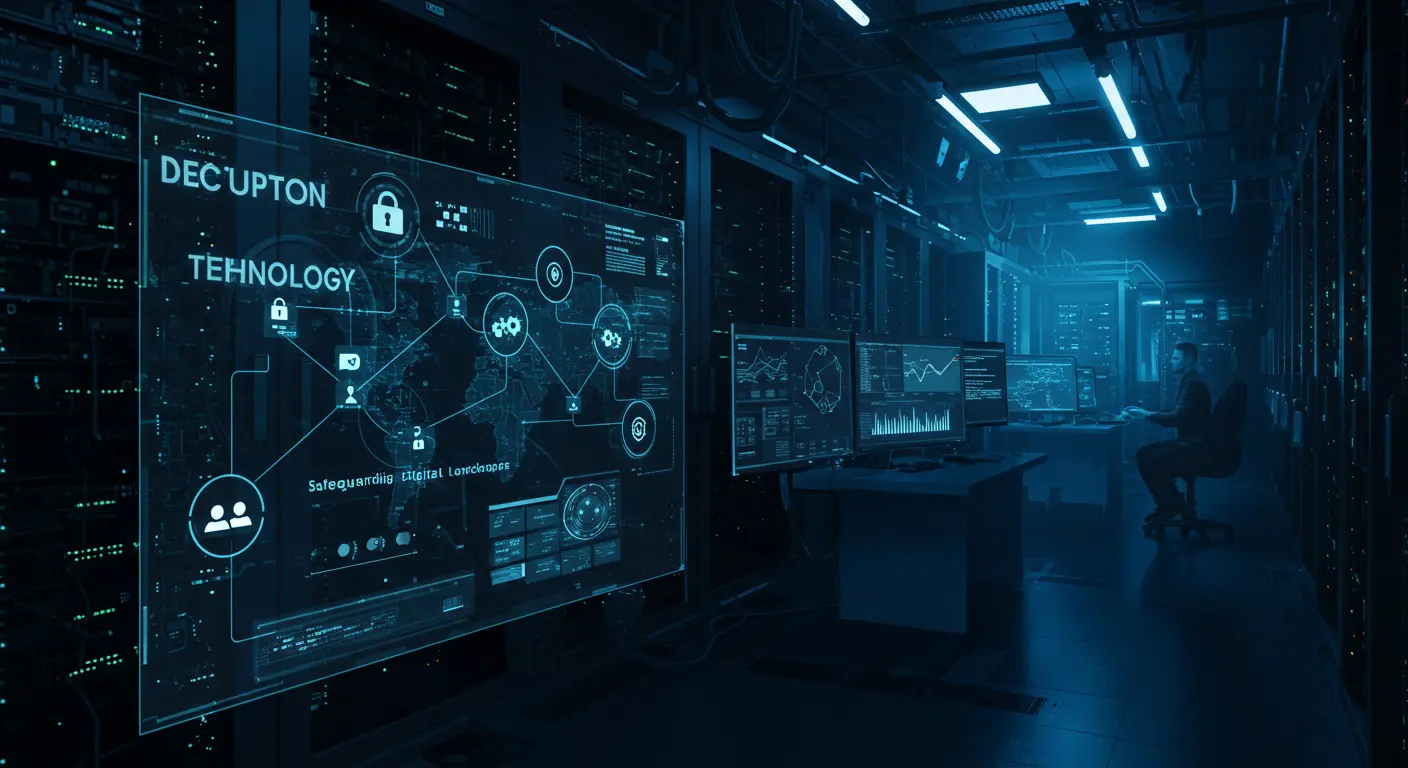Within the complex digital world, understanding deception technology becomes essential as cyber threats evolve with unprecedented sophistication. So, what is deception technology? Deception technology is a cutting-edge method that involves deploying a network of decoy systems designed to mimic legitimate digital assets convincingly. These systems act as sophisticated traps, luring malicious actors to target replicas rather than real data repositories. By drawing attackers into these convincingly deceptive environments, organizations can divert attention away from core assets, gaining the upper hand against potential cyber incursions. This strategic use of deception prevents actual harm and allows enterprises to collect valuable insights into attackers’ methodologies, strengthening overall cyber resilience.
How It Works
Deception technology operates on the premise of creating a web of intricately designed, interactive decoys that blend seamlessly into existing digital ecosystems. These decoys are indistinguishable from genuine systems, presenting a facade that lures attackers into a false sense of security. Attackers trigger immediate alerts upon engaging with these decoy systems, enabling cybersecurity teams to monitor their real-time behavior. This early detection mechanism provides an invaluable opportunity to study the attackers’ tactics and techniques, capturing critical data that informs future defensive measures. Organizations gain a strategic advantage by analyzing patterns and understanding adversary behavior, allowing them to adapt their defenses to thwart potential threats preemptively.
- Develop highly convincing, interactive decoys that closely resemble tangible network assets, enticing attackers into engaging with them.
- Monitor attacker movements within these fabricated environments meticulously to identify potential breaches and vulnerabilities.
- Analyze attacker behavior and glean actionable intelligence to refine and enhance overarching cybersecurity strategies.
Advantages of Using Deception Technology
One of the foremost benefits of deploying deception technology is its stealth-like capability, which allows it to seamlessly integrate into the existing digital tapestry without arousing suspicion from cyber criminals. The indistinguishable nature of these decoys ensures that attackers remain unaware of their presence, enabling organizations to collect comprehensive insights into intrusion attempts. This intelligence-gathering process illuminates the pathways through which threats gain access to networks, empowering cybersecurity teams to craft effective countermeasures to mitigate such vulnerabilities. Furthermore, the scalability of deception technology ensures that it can be tailored to meet the security requirements of businesses of all sizes, facilitating seamless integration into existing security frameworks without causing system disruptions or operational downtime.
Integrating Deception with Current Systems
Organizations must integrate these tools within the broader cybersecurity framework to fully leverage the advantages of deception technology. Married with conventional security measures—such as firewalls, antivirus programs, and intrusion detection systems deception strategies enhance an organization’s resilience against cyber threats. This multidimensional approach creates a fortified, layered defense system capable of detecting and neutralizing threats at their nascent stages, minimizing the potential impact of any cyber incidents. Through this synergy, organizations bolster their security posture, ensuring comprehensive protection across their digital landscape.
Steps to Integration:
- Conduct a thorough evaluation of existing cybersecurity measures to identify optimal points for deception tactics integration.
- Deploy deception environments that replicate tangible network assets’ appearance and functionality, ensuring their indistinguishability from genuine systems.
- Enhance and adjust these deceit strategies regularly to stay current with the advancement of cyber threats and preserve their efficacy and significance.
Real World Applications
Deception technology’s applicability spans various industries, with notable implementations in finance and healthcare. Banks leverage these tactics to shield sensitive financial data from sophisticated attacks in the financial sector, where data breaches can have catastrophic implications. By creating deceptive environments that mimic critical banking applications, financial institutions can safeguard against a spectrum of threats, including phishing and malware. Similarly, the healthcare sector employs deception technology to uphold stringent compliance standards and protect patient data against unauthorized access. These real-world applications underscore the versatility and necessity of deception technology in fortifying organizations against contemporary cyber risks, enabling them to effectively secure their most valuable assets.
Latest Trends in Deception Technology
The rapidly evolving field of cybersecurity constantly witnesses new trends emerging to counter advanced threats. A report on Forbes emphasizes the integration of AI-driven deception systems as a significant advancement. These smart tools utilize artificial intelligence to predict hackers’ actions, adjusting quickly to changing threats with improved speed and accuracy. By embedding AI within deception strategies, organizations enhance their ability to maintain a proactive stance, fortifying their defenses against increasingly sophisticated cyber threats. As businesses pursue enhanced resilience against cyber adversaries, adopting AI-enabled deception tools is poised to grow, solidifying their role in modern cybersecurity strategies.
Challenges and Considerations
Despite its advantages, adopting deception technology presents several practical challenges that organizations must address to ensure successful implementation. The process requires substantial resource allocation, particularly regarding decoy environments’ setup and ongoing maintenance. Ensuring that these decoys remain indistinguishable from real systems is paramount to their effectiveness, necessitating meticulous attention to every detail. Additionally, organizations must recognize that the success of deception strategies hinges on their constant evolution and adaptation to emerging threats. By committing to regular updates and improvements, businesses can maintain the relevance and efficacy of their deception environments, ensuring robust protection for their digital assets.
Conclusion
Deception technology is reshaping the cybersecurity landscape by offering organizations a compelling, proactive approach to defense. By diverting cyber attackers away from genuine assets and into controlled deception environments, organizations can effectively prevent potential security breaches and address vulnerabilities at their onset. As cyber threats become increasingly intricate, reliance on advanced deception tactics is vital for securing the digital future. By investing in and evolving these technologies, organizations can build resilience against emerging threats and fortify their defenses, ensuring their critical digital assets remain safeguarded against unforeseen adversities. Embracing deception technology enables enterprises to stay ahead of adversaries, maintaining a transformative stance in the ongoing battle against cybercrime.

